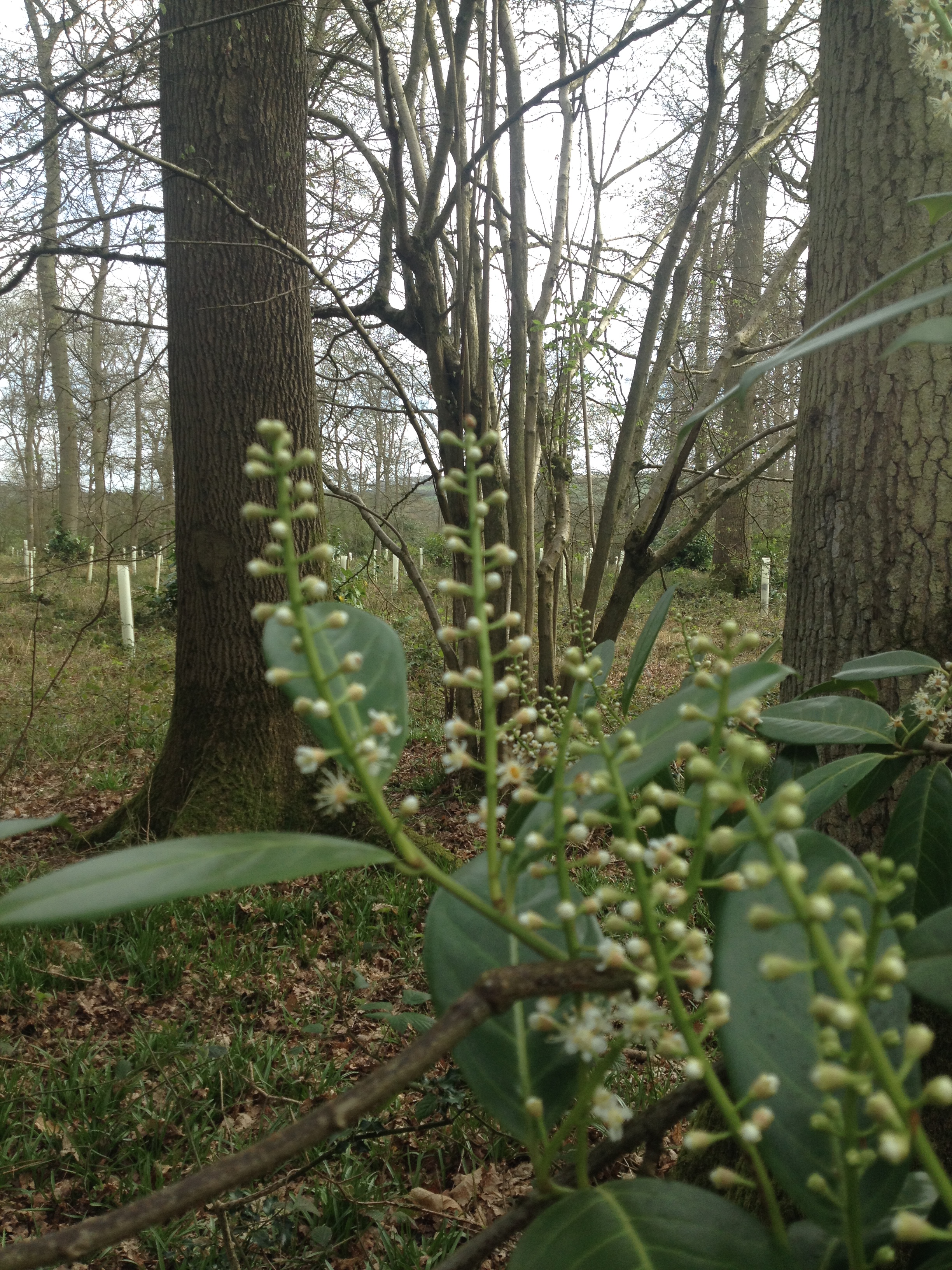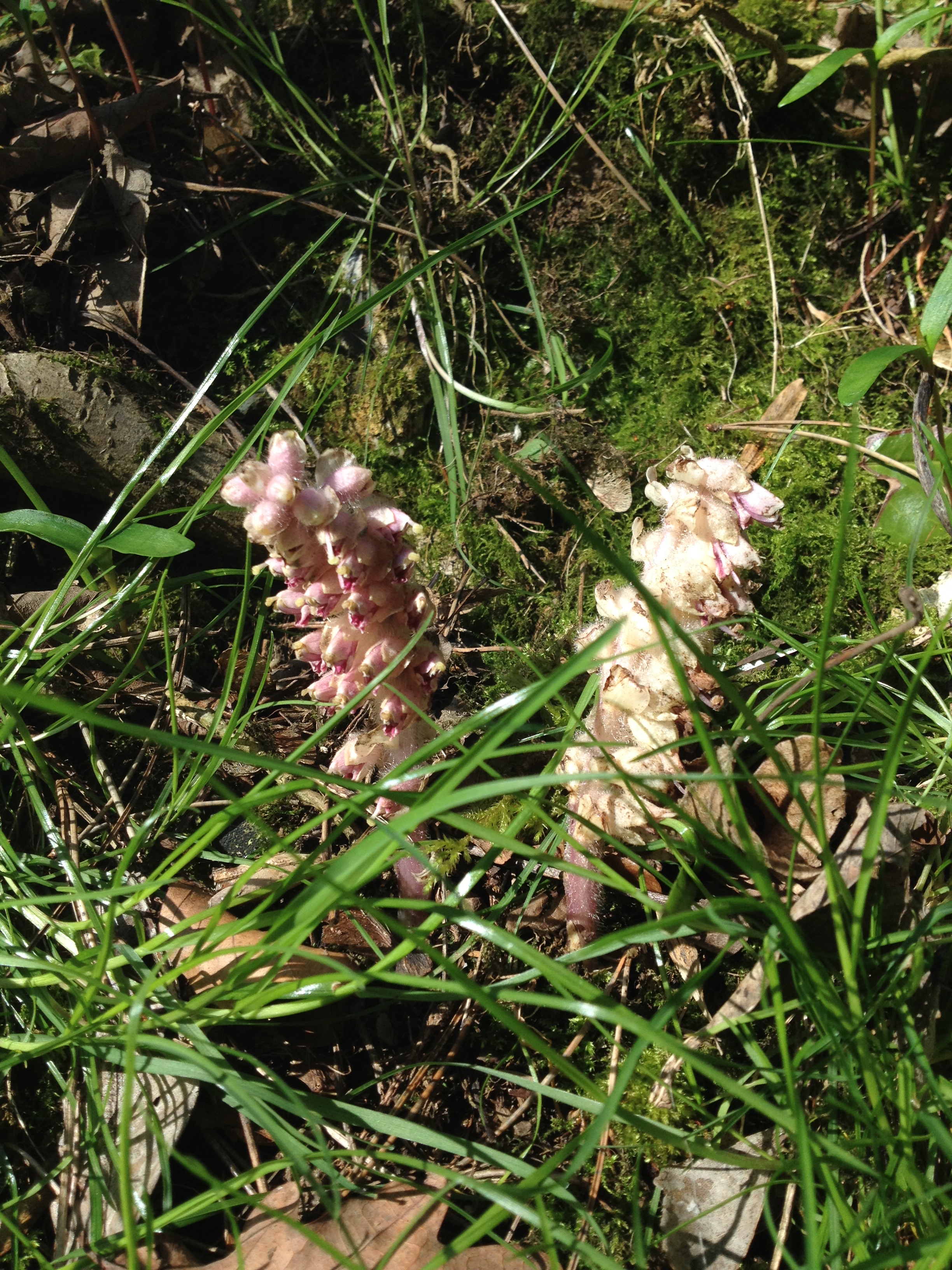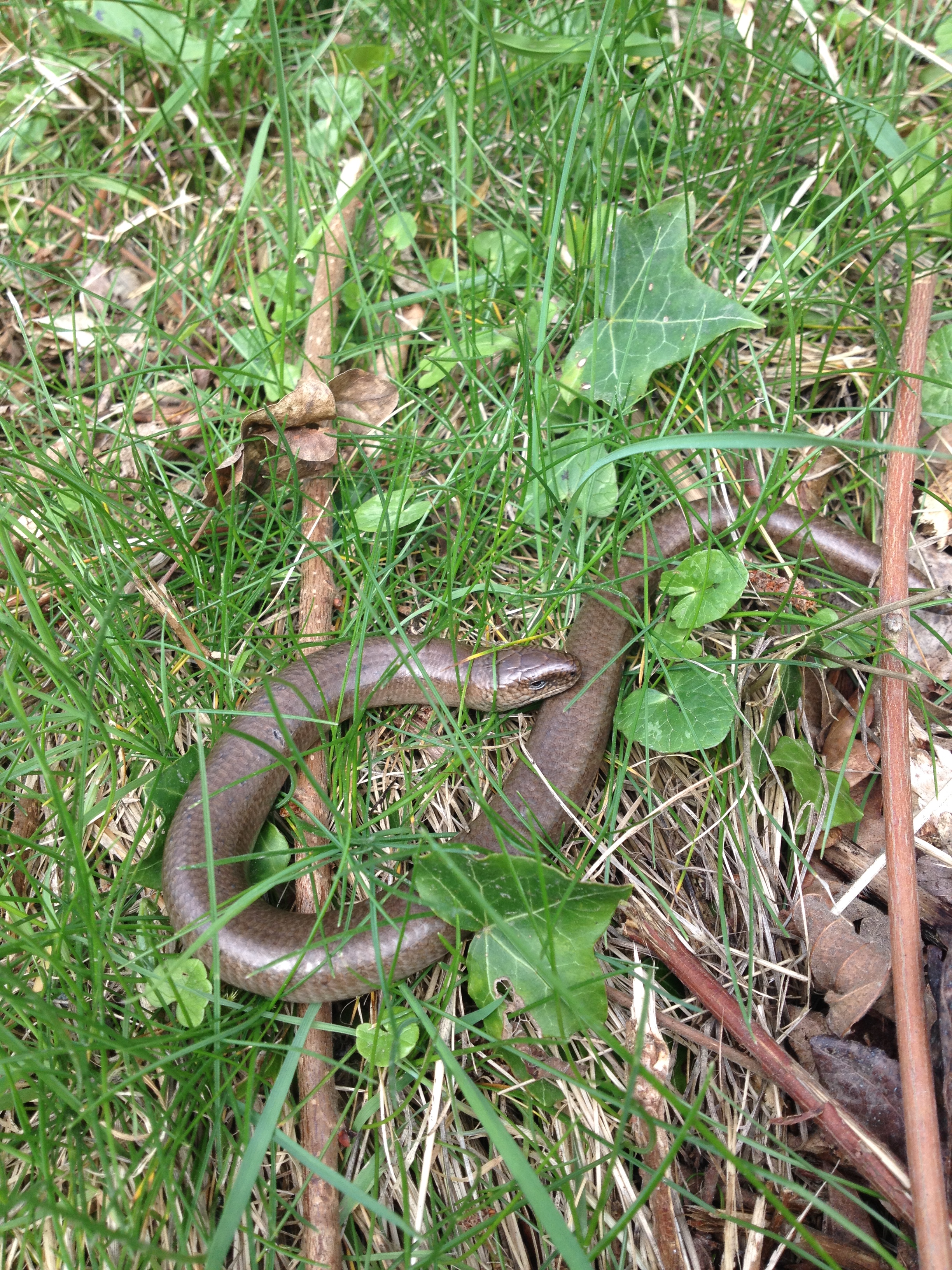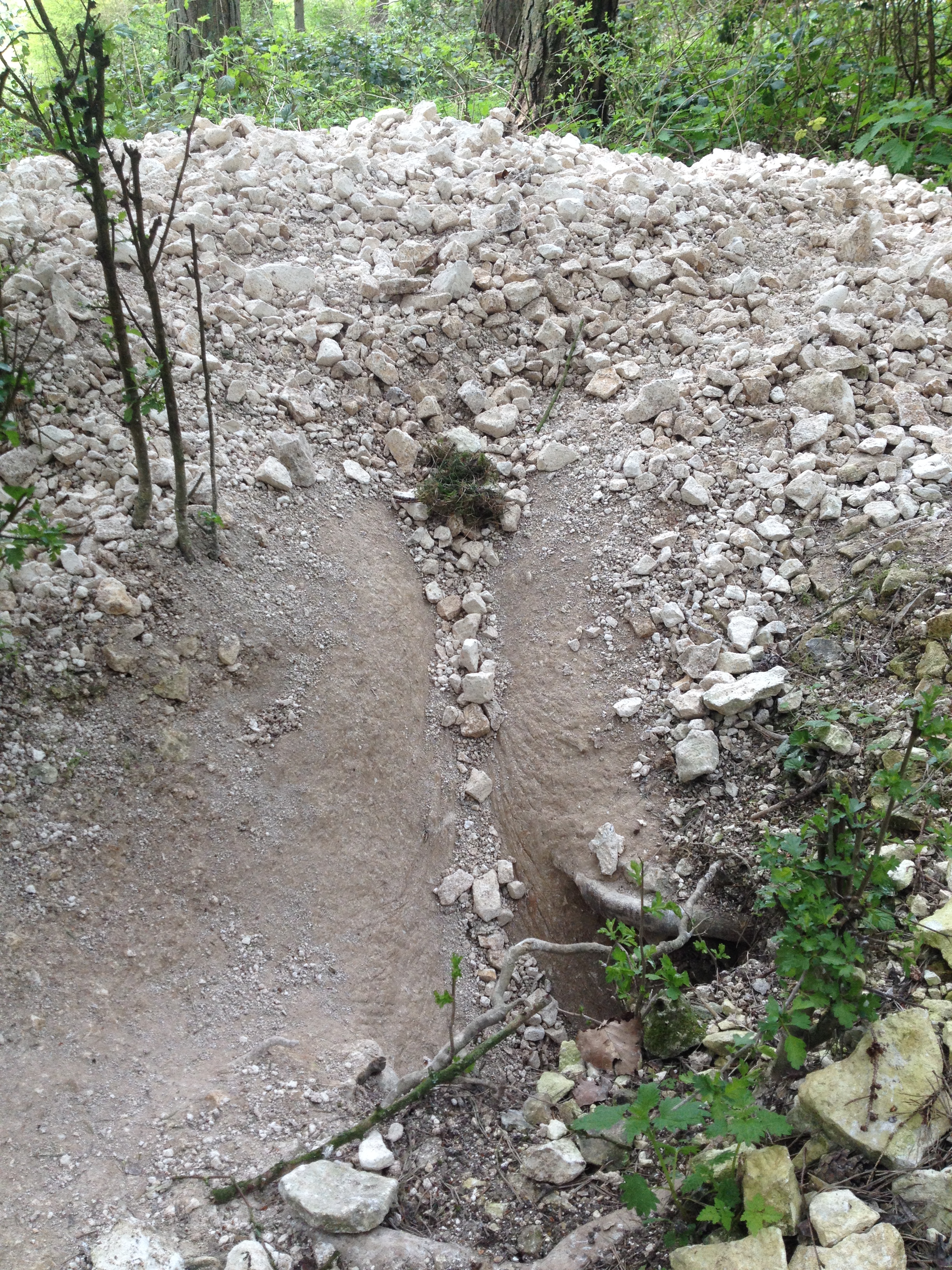Cherry Dew.

The scent of cherry laurel in the keepered woods is a sensory mnemonic: it triggers a search. The bluebells are emerging where the canopy is native and open and, near the badger sett, I go looking for toothwort and find it. A ghostly wildflower that lacks chlorophyll and springs from tree roots, it resembles a teetering tower of piled teeth, built by a toothfairy.
Wild cherry rings the woods and a song thrush repeats its ‘cherry dew, cherry dew’ refrain. A wych elm leans out towards the light, the pale green rosettes of its papery seeds clustered like garlands along the branches. This is a time of confirmation; of waking up, breaking out and checking: I visit the same haunts, looking for different things; hoping that despite man’s best efforts to ruin and ignore the thing it relies on for life and imagination and sanity, spring will still deliver its promise and comfort.
A richly furred bee-fly checks its long needle-like proboscis into the tilted jars of the toothwort, monitoring the health of the season. One parasite feeds from another: a word that has such negative connotations, yet is part of the necessary interconnectedness and shared reliance of life on earth that we still struggle to appreciate.

There are reassuring firsts: swallows scissoring up the air in colours like a Breton top and the first lilting, laughing, descending notes of willow warblers. I search in vain for adders, but find a slow worm solar-powering up on a bank of violets, primroses and wild strawberries.

We tentatively search out badger setts and fox earths, appraising them for activity, good viewing and wind direction, keeping a distance around the fox earths, using binoculars to check for fresh scat and food remains. The vixen will move cubs without hesitation should she sense us. The Hever Wood badgers have heaped great mounds of fresh white chalk rubble from their tunnels, scraping deep grooves in earth that resembles porous bath enamel: almost impossible to get a spade into. The soil is thin, the sloping tunnel entrances worn smooth as luges.

In the middle of the afternoon, across the deepest of the hidden combes, a vixen basks on the sunny hillside. She burns orange above a neat white ruff, swivels wide, black-tipped ears towards us, yawns and lies back on the grass. Her 7-week old cubs safe and no doubt sleeping in the earth nearby.
Later, writing the word ‘lapwing’ in my hut conjures them up: I hear the bubbling cry and spill my tea to look for them. I worry how vulnerable they are, nesting exposed on the open fields. The tractor and sprayer goes out again and I wonder if the driver will spot them, marked or not. My eyes are drawn habitually to the hill and the sheep scattered over it. The shepherd’s not moved them off the big down for the fifth spring in a row, as he should – meaning it will not, again, be golden with cowslips and their attendant insects.
I heard a new word this week. Solastalgia. A word coined with an interesting etymology, increasingly in use. It recognises an old, localised, previously unnamed phenomena, on the rise, experienced globally. It is a homesickness or grief for a familiar, loved landscape that has changed as we live in it: through clearances, enclosure, development, agribusiness, war, mining, climate change – the word has settled in my heart with a mixture of fear and confirmation.
We are stockchecking spring, with our hearts in our mouths, like we might stockcheck a Library before having to close it, despite its increasing relevance and our need of it. We are ever hopeful, yet fearful this might be the last time lapwings nest on this field or that one; that the hedgehog run over by the phone box, might be the last. That the adders have gone. That, for the first time in 1,000’s of unbroken years, a cuckoo will not return to this place and be recorded by someone; a shepherd’s nod, a villager’s smile, a child’s echo down the lanes to school, a housewife’s tweet.
Leave a Reply to Annie O’G WorsleyCancel reply